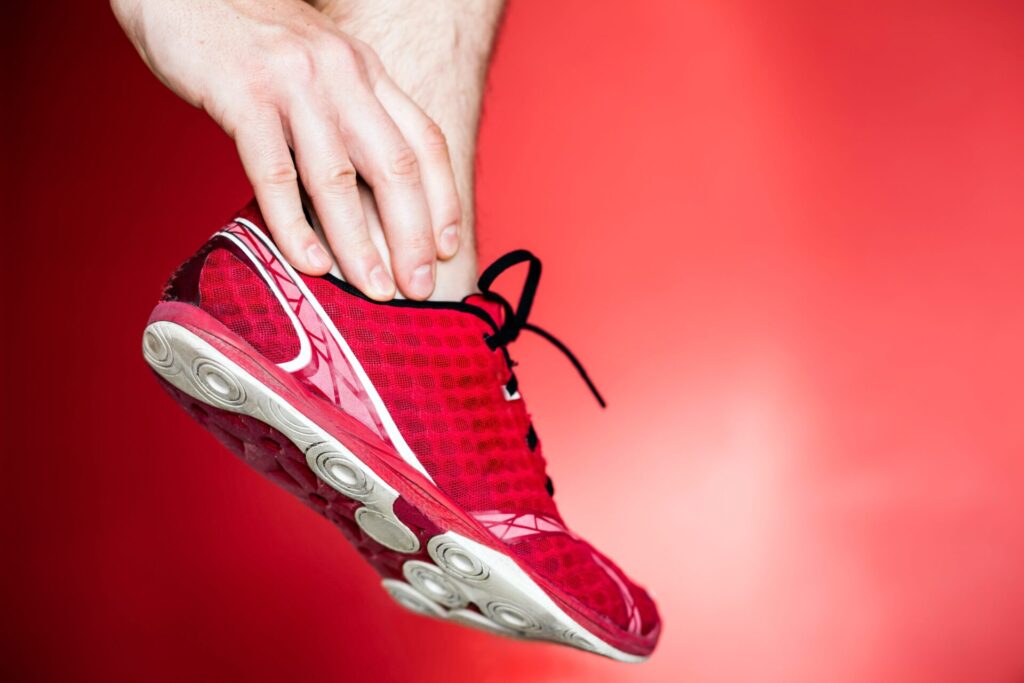Paola Ash
Ankle Injuries
Ankle Injuries are often thought of as sports injuries. But you don’t have to be an athlete or even a ‘weekend warrior’ to turn your ankle and hurt it. Something as simple as walking on an uneven surface can cause a painful, debilitating sprain. An ankle injury occurs when the ankle joint is twisted too far out of its normal position. Most ankle injuries occur either during sports activities or while walking on an uneven surface that forces the foot and ankle into an unnatural position. The unnatural position of the ankle in high-heeled shoes or walking in unstable, loose sandals or balance issues for example are also factors that may contribute to ankle injury.
Are there different signs for different Ankle Injuries?
- ankle pain, often sudden and severe
- swelling
- bruising
- inability to walk or bear weight on the injured joint
Carefully selected stretches and rehabilitation aids the muscles and the joints to repair optimally. It also helps more blood circulate to the area, which may help the ankle heal faster. Gently beginning loading the ankle. Try flexing the foot forward, then backward, or rolling it clockwise, then counterclockwise. However, it is important to avoid overextending the ankle or moving it in any directions that hurts. Massage also help promote healing and reduce any possible scar tissue formation. Good nutrition here cannot be underestimated.
Mechanism & Types of Injury
Most ankle injuries result from an excess inversion motion less likely an excess eversion of the ankle joint.
Like any other musculoskeletal region, the ankle can be injured by fracture, dislocation, other sprains and also strains. Isolated sprains and strains are common, but most fractures and dislocations also include ligament damage.
The causes of ankle injuries are numerous:
- Slips and falls on ice, stairs and rugs
- Rotational force on the athletic field
- Blunt trauma or a direct blow to the ankle joint or connecting bones
- A fall from a substantial height feet first
- Ankle fractures even can occur in front-impact car collisions.
Podiatrists use a grading system for diagnosing ankle sprain. Here are the grading systems of Ankle Injuries:
Grade 1 ankle sprain has no instability; minimal swelling, pain or tenderness; and, clinically, fewer than 25% torn ligament fibers. This patient will likely be able to bear weight on the injured ankle and move it through normal ranges.
Grade 2 sprains have moderate instability, pain and tenderness; swelling and ecchymosis–bruising–are apparent; and between 25%-75% of the ligament fibers are torn. This patient will have difficulty bearing a limited amount of weight on the ankle, and range of motion is also impaired.
Grade 3 sprains are the most severe, with more than 75% of the ligament fibers torn. The patient will complain of severe pain and tenderness. Ankle instability is complete, and there is significant swelling and ecchymosis. This patient cannot as well bear any weight on the ankle and has severely impaired range of motion.
Sprains are ligament injuries while strains are tendon injuries. Both result from hyperextension, twisting, falls or excessive pulling on the ankle.
In addition, dislocations, the separation of a joint, result from complete tearing of several ligaments, which allows for bone displacement and can be complicated with one or several fractures. They are caused by pulling injuries, major trauma, hyperinversion or hypereversion.
Dislocations, with or without fracture, pose a serious threat to distal circulation in the foot.
Ankle Taping as an Initial Support
Moreover, ankle taping has been shown to be effective for initial support of the injured ankle. However, it was found that the mechanical support of tape was reduced by more than two-thirds after approximately 400 steps. Lace-up ankle braces have been shown to be equally, if not more effective and more cost effective. Athletes with moderate to severe lateral ankle ligament sprains should then wear a semirigid or rigid ankle orthosis for at least 6 months following injury. The brace should also be worn during painful activities and during exercise.
Hence, an injured ankle is not a life- threatening injury, but deformity, exposed bone ends and severe pain complaints draw our attention to the ankle and away from potential life threats.
If you are suffering from and worried about your injured ankle, we can propose a plan of treatment to help you.
Our podiatrists can provide diagnosis, exercise rehabilitation, mobilisation, orthotics, footwear advice, and other treatment.
For consultation and treatment, please: Book an Appointment
Read our blog about High Ankle Sprain here https://www.thechelseaclinic.uk/high-ankle-sprain/
References:
O’Keefe D, Nicholson DA, Driscoll PA, Marsh D. The ankle. Brit Med J 308:331-337, Jan 29, 1994.
Larsen D. Assessment and management of foot and ankle fractures. Continuing Professional Development, Orthopedics 17:37-46, Sep 2002.
Ganley TJ. Ankle injury in the young athlete: Fracture or sprain? J Musculoskel Med 17:311-325, June 2000.
Beynnon B. The use of taping and bracing in treatment of ankle injury. ISAKOS – FIMS World Consensus Conference on Ankle Instability, 2005; p.38–9.
Osborne MD, Rizzo TD Jr. Prevention and treatment of ankle sprain in athletes. Sports Med 2003;33:1145–50.

Contact Us
Now offering home visits and online consultations
Tel: +44 (0) 207 101 4000 WhatsApp: +44 (0) 778 066 5223 Email: info@thechelseaclinic.uk
We now offer home visits and online consultations!
From the Blog

The Microvasculature of the fingertips and toetips
The Microvasculature of the fingertips and toetips The microvasculature of the fingertips and toetips plays a crucial role in maintaining the health and function

Syphilitic paronychia
Syphilitic paronychia Syphilitic paronychia, though rare, is a manifestation of syphilis, a sexually transmitted infection caused by the bacterium Treponema pallidum. Syphilis can have

Its Wimbledon and Tennis Leg Injury
Its Wimbledon and Tennis Leg Injury Wimbledon Tennis starts tomorrow. As such we are talking about none other…than Tennis Leg! You are just about to
